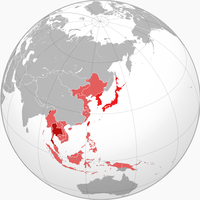
Photo from wikipedia
Chapter 4 uses surveys and demographic data, as well as interviews, to map out existing patterns of South Asian political participation and representation. In this chapter, Mishra highlights the contradictions… Click to show full abstract
Chapter 4 uses surveys and demographic data, as well as interviews, to map out existing patterns of South Asian political participation and representation. In this chapter, Mishra highlights the contradictions between elite South Asians’ increasing political success, and the continued lack of wide-scale mobilization and inclusion of South Asians in the political process. The final two chapters (Chapters 5 and 6) turn their attention slightly away from the question of ethno-racial mobilization, to consider the transnational political investments of South Asian Americans. Whereas existing scholarship on diasporic South Asians’ transnationalist projects focuses on South Asians’ political engagements in their home countries – at the expense of those in the US, or other countries of settlement –Mishra connects transnational practices explicitly to South Asians’ political projects in the US. He examines two specific transnational projects: South Asian Americans’ role in the US–India Civil Nuclear Deal in 2006, and their involvement in proand anti-Hindu Nationalist movements both in the US and in India, in order to show how diasporic mobilization simultaneously relies on a discourse of unified community, while also exacerbating the contested notions of home and belonging among those diasporic communities. Desis Divided is just as important an addition to scholarly debates about political incorporation as it is to the growing body of scholarship on the South Asian diasporic experiences. Mishra’s shift away from ethno-racial mobilization as a model for political incorporation importantly allows scholars to more productively address the internal and cross-cutting distinctions among South Asian Americans.
Journal Title: Contemporary South Asia
Year Published: 2017
Link to full text (if available)
Share on Social Media: Sign Up to like & get
recommendations!